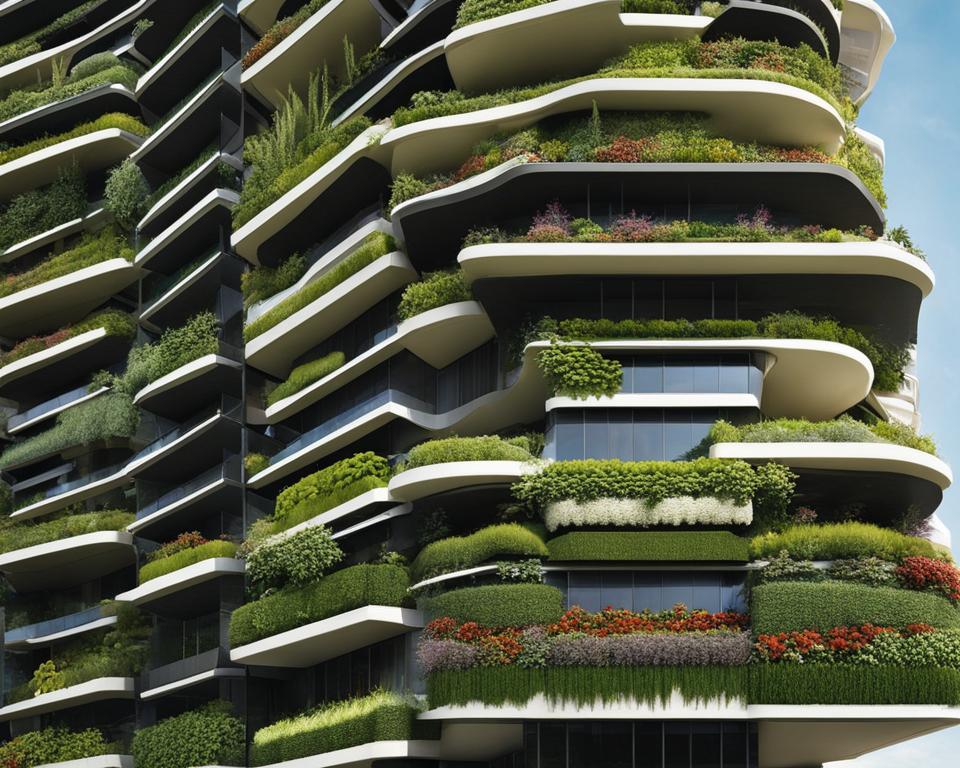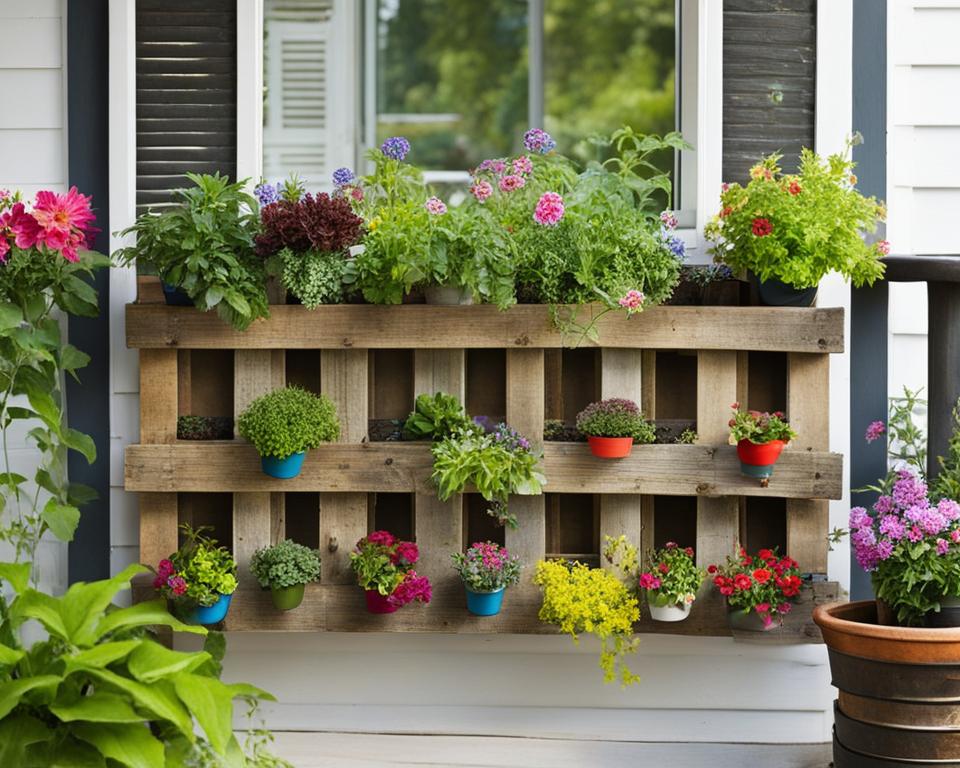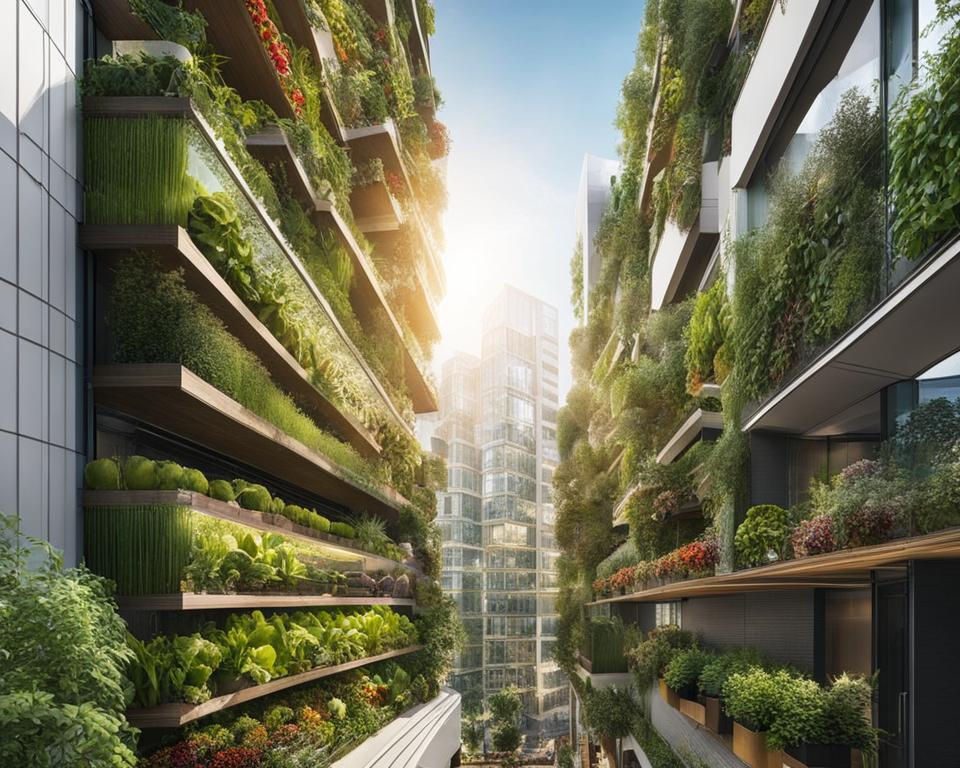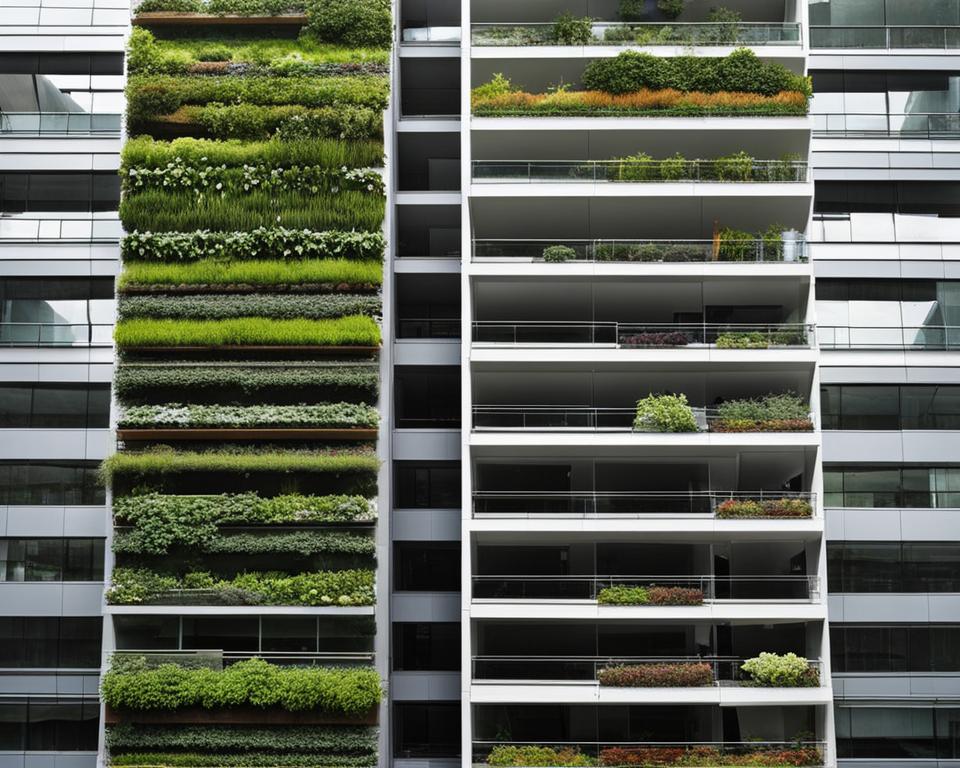As spring ushers in renewed energy, you might be gazing at the confines of your Baton Rouge urban dwelling and pondering how best to cultivate a lush garden within the limited space. Vertical urban gardening emerges as a beacon of hope, ushering in an era of greenery for city dwellers like you. By employing innovative urban gardening techniques, cultivating your oasis in the sky is not only possible, but also deeply rewarding.
Whether it’s a cozy balcony or a modest backyard, small space gardening unlocks the potential of every square inch. With the right urban gardening solutions, walls and fences transform into thriving green canvases. From wall planters and trellises to green ladders and wall-mounted pots, the array of vertical gardening ideas is as broad as your imagination.
Moreover, as you delve into urban garden design, you’ll discover that vertical gardening systems aren’t merely about aesthetics—a wave of sustainable urban gardening is growing in cities across the country, and you can be a part of it. Now, let’s turn those vertical visions into blooming realities.
Key Takeaways
- Vertical gardens make excellent use of limited spaces, maximizing greenery in urban settings.
- Diverse and imaginative urban gardening techniques expand growing potential on any vertical surface.
- Implementing the right vertical gardening systems creates sustainable ecosystems in metropolitan areas.
- Small space gardening solutions elevate urban living by seamlessly integrating nature into your home.
- Expert tips on urban gardening can transform mere walls into productive and invigorating green spaces.
Understanding Vertical Urban Gardening
As cities continue to expand upwards, so does the opportunity for vertical urban gardening. This innovative approach to greening our urban spaces not only enhances aesthetic beauty but brings forth a multitude of functional benefits. Whether you are looking to start a garden on your apartment balcony, or you want to add life to your office environment, understanding the principles of this gardening method is the first step to creating your sustainable oasis in the sky.
Benefits of Gardening Upwards
Gardening in a vertical fashion is not just about saving space; it is a path to numerous other advantages. The concept of growing your garden upwards promotes cleaner air within urban locales, reduces noise levels, and can even contribute to the thermal insulation of buildings. An upward garden can serve as a natural retreat, enhancing your mental well-being and offering a respite from the urban hustle.
Popular Plants Suitable for Vertical Growth
- Climbing varieties such as tomatoes, cucumbers, and beans thrive on trellises.
- Herbs like basil, chives, and mint are great for smaller wall planters.
- Flowering plants such as petunias and marigolds add splashes of color to your vertical space.
- Succulents and ferns which require less soil are suitable for modular vertical walls.
The Basics for Beginners
Embarking on the journey of vertical gardening for beginners can seem daunting, but it is easier than you think. Start with a simple wall planter or a few hanging baskets to get the feel for maintaining and caring for plants above ground. As you gain confidence and experience, you can move on to more complex structures like green walls or trellises. Remember, no matter the level of complexity, the key factors for success will always be proper sunlight, watering systems, and plant choices.
| Vertical Gardening System | Plant Options | Space Requirements | Maintenance Tips |
|---|---|---|---|
| Wall Planters | Herbs, ferns, and strawberries | Minimal; great for balconies and patios | Regular watering; monitor for drainage |
| Trellises | Climbing plants, flowering vines | Need height; suitable for walls and fences | Pruning to encourage upward growth; ensure stability |
| Green Walls | Mix of small perennials, edibles, and succulents | Requires more space; can cover entire walls | Integrated watering system; seasonal plant refresh |
Keep these urban gardening tips in mind and you’ll soon enjoy the lush, vibrant vertical garden you’ve envisioned. With a bit of creativity and some vertical gardening ideas, even the smallest of urban spaces can be transformed into a productive and refreshing green haven.
Innovative Vertical Gardening Ideas for Small Spaces

Embracing small space gardening is not only about making the most of your space, but it’s also about unleashing your creativity and transforming your urban environment. With smart vertical gardening ideas, even the most confined areas can burgeon with life. Before you begin, it’s important to understand which strategies can best transform your living space into a thriving green haven.
Wall Planters and Hanging Baskets
Wall planters are a cornerstone of vertical urban gardening. Utilizing various containers, from upcycled objects to stylish modular systems, they enable you to grow a lush vertical garden. Furthermore, hanging baskets elevate the beauty of your space, allowing plants to drape gracefully and add dynamic layers to your garden’s visual appeal. They’re perfect for an array of flora, including flowering annuals and trailing foliage.
Utilizing Gutter Systems for Kitchen Herbs
Imagine stepping outside to your balcony or patio to pluck fresh herbs right from your own urban garden. Gutter systems offer innovative urban gardening solutions, acting as slender, horizontal planters ideal for culinary herbs and smaller plants. Fixed to walls or fences, they make excellent use of narrow spaces, and their elevated structure means less bending and reaching to tend your plants, making gardening a pure joy.
| Garden Feature | Recommended Use | Benefits |
|---|---|---|
| Wall Planters | Herbs, Succulents, Annuals | Space-saving; Adaptable design; Aesthetic appeal |
| Hanging Baskets | Trailing Plants, Flowers | Adds vertical dimension; Portable; Enhances balconies/patios |
| Gutter Systems | Kitchen Herbs, Strawberries | Convenient height; Efficient water drainage; Easy to install |
Whether you’re looking to spruce up your outdoor space or bring some nature into your home, these urban garden designs offer a fresh perspective on traditional gardening. They’re not just a means to grow your own produce or enjoy year-round greenery; they’re a statement of your commitment to inventive living and sustainable urban life. So roll up your sleeves and start exploring the heights of your green thumb!
DIY Vertical Gardening: Repurpose Common Household Items

Embracing DIY vertical gardening is not just about adding green to your space; it’s about innovation and sustainable living. As you explore urban gardening tips, you’ll discover that repurposing common household items adds character and function to your urban garden design. Take a look around your home—you’re bound to find objects that can lead a second life as part of your eco-friendly garden project.
If you’re new to vertical gardening for beginners, start simple. Soft drink bottles and milk containers can be cleaned, cut, and hung securely to act as cozy homes for your plants. This method is not only perfect for urban gardening tips enthusiasts looking to upcycle but also serves as a great introduction to vertical urban gardening.
- Plastic Bottles: Slice them in half, fill with soil, and plant herbs or flowers. Hang or mount them against a sunny wall.
- PVC Pipes: Transform pipes into planters for a modern look and feel in your garden area.
- Wooden Pallets: Stand them upright for an instant garden. Add pots or attach landscaping fabric to hold soil for direct planting.
- Old Ladders: Step up your garden game by using each rung as a shelf for plant pots or planter boxes.
- Repurposed Gutters: Attach gutter sections to a wall or fence for a cascading effect filled with flowers or strawberries.
The possibilities are endless when it comes to DIY vertical gardening. Not only are you crafting a unique urban garden design, but you’re also contributing to a more sustainable world by upcycling materials that might otherwise end up in a landfill. So, roll up your sleeves and let your creativity bloom along with your plants!
Essential Tips for Maintaining a Vertical Urban Garden

Flourishing urban gardens in constrained spaces begin with sound maintenance practices. The trick lies in understanding the needs unique to vertical gardening systems and employing urban gardening techniques tailored just for them. Let’s delve into the strategies that help sustain your hanging Eden, ensuring it remains a verdant retreat in the midst of the city hustle.
Proper Irrigation Techniques
Irrigation can be a challenge in small space gardening, but with the right approach, your plants will thrive. Here’s where smart watering systems come into play. Think beyond the watering can; consider investing in a drip irrigation system. It’s an efficient way to deliver water directly to the roots without waste. If a high-tech solution isn’t your style, manual watering with a disciplined schedule and strategic technique is equally effective. Remember, consistency is key.
Strategies for Pest Control and Pollination
As an urban gardener, you’re probably no stranger to the occasional uninvited guest nibbling at your crops. A combination of companion planting and natural pest control methods can fortify your defenses against pests, while also enhancing your garden’s pollination process. Opt for a variety of plants that attract pollinators and bloom at different times to ensure your garden is always buzzing with life.
| Irrigation System | Advantages | Considerations |
|---|---|---|
| Drip Irrigation | Water efficiency, root-level delivery, reduced weed growth | Initial setup cost, regular maintenance |
| Manual Watering | Control over water distribution, no setup cost | Time-intensive, requires consistent schedule |
| Pest Control Method | Benefits | Application |
| Companion Planting | Natural pest deterrent, promotes biodiversity | Strategic plant pairing, research on interactions |
| Natural Pesticides | Environmentally friendly, non-toxic to pollinators | Consistent application, proper dosage |
Remember, sustainability is at the heart of urban gardening solutions. These techniques not only ensure a vibrant and productive garden but also contribute to a greener future, solidifying your role in the movement for sustainable urban gardening. So roll up your sleeves, because your vertical oasis depends on your informed care and attention.
Transforming Edible Yields with Urban Gardening Techniques

As cities grow and green spaces dwindle, innovative urban gardening techniques are emerging as a beacon of sustainability and self-sufficiency. Vertical urban gardening has revolutionized the concept of city gardens, offering fruitful ventures that rise above the limited square footage. Through thoughtful vertical gardening ideas, you can enjoy a variety of fresh produce right from the comfort of your home. Let’s explore how vertical yields stack up against horizontal ones and how to optimize your selection for urban success.
Horizontal vs Vertical Crop Yields
In traditional horizontal gardening, space dictates productivity. In contrast, vertical gardening exploits the unused vertical planes that are abundant even in the most compact living spaces. This means you can potentially harvest more produce per square foot than ever before. Vertical gardening solutions such as trellises, wall planters, and stacked systems make it possible to grow upwards, offering a new dimension of crop yields.
Optimizing Crop Selection for Urban Conditions
Not all plants are created equal when it comes to urban gardening solutions. Some thrive in a vertical environment, others not as much. To maximize your garden’s output, it’s crucial to choose the right crops that can handle the unique conditions of urban settings—be it limited sunlight, varying temperatures, or less room for roots to expand.
| Crop Type | Suitability for Vertical Gardening | Urban Adaptability Notes |
|---|---|---|
| Climbing Vegetables (e.g., Tomatoes, Beans, Cucumbers) | High | Requires sturdy support; great for sunny balconies or walls |
| Compact Herbs (e.g., Basil, Mint, Thyme) | High | Thrives even in moderate lighting; perfect for window sills |
| Bush-type Plants (e.g., Peppers, Eggplant) | Moderate | Adaptable to less sunny conditions; requires more growing space |
| Leafy Greens (e.g., Lettuce, Spinach, Kale) | High | Can be grown in shallow containers; suitable for indoors or outdoors |
| Fruiting Plants (e.g., Strawberries, Melons) | Variable | Some types suitable for vertical growth; needs ample light and care |
When you select crops tailored to your environment and infrastructure, your urban garden transforms into a powerhouse of edibles. With the integration of these vertical gardening ideas into your lifestyle, you’re not only catering to your palate but you’re also contributing to a greener, sustainable way of life—right in the heart of the city!
Integrating Vertical Gardening Systems into Urban Design
As you explore the fusion of greenery with urban infrastructure, you’ll find that vertical gardening systems are more than just a trend; they represent a vital shift towards sustainable urban living. By weaving nature through the fabric of city life, you can unlock the full potential of space-efficient urban garden designs.
Space-Efficient Urban Garden Designs
In the bustling heart of the city, effective use of space is crucial. Vertical gardening systems offer scalable solutions for integrating green spaces into urban areas. With thoughtfully planned urban garden design, you’ll be able to revitalize your environmental footprint without compromising on the aesthetic or functional use of space.
Creating Aesthetically Pleasing Living Walls
Imagine a wall that breathes life into your urban surroundings. Creating aesthetically pleasing living walls can transform the stark lines of an urban skyline into a thriving canvas of biodiversity. Living walls act as natural air filters while providing a serene backdrop that encapsulates the essence of vertical urban gardening.
| Design Element | Aesthetic Benefit | Functional Benefit |
|---|---|---|
| Plant Diversity | Enhances visual appeal with a variety of colors and textures. | Supports a range of species, contributing to biodiversity. |
| Structural Integration | Blends seamlessly with modern urban architectural styles. | Helps regulate building temperature, leading to energy efficiency. |
| Water Features | Adds a dynamic and refreshing element to living walls. | Supports plant growth and provides natural humidity. |
Vertical gardening systems are not only vital for urban aesthetics but also for promoting environmental sustainability and social well-being in cityscapes.
Choosing the Right Supports: Trellises, Poles, and More
When diving into the world of vertical urban gardening, the selection of support structures is as crucial as the choice of plants themselves. Let’s explore how various forms of support can optimize your vertical gardening systems and enhance your overall urban garden design. Whether you’re aiming for practical functionality or a touch of aesthetic grace, the right trellis or pole can make all the difference.
Consider metal trellises for a sturdy and long-lasting option, capable of supporting the weight of your more ambitious climbers. Bamboo stakes, on the other hand, offer a natural and sustainable alternative that blends seamlessly into any garden setting. For those who love eco-friendly solutions, repurposed items such as old ladders or wooden pallets can be transformed into unique, personalized support systems for your urban gardening solutions.
- Metal Poles: Ideal for heavy, fruit-bearing plants due to their strength and durability.
- Bamboo Stakes: Provide a natural and eco-conscious choice that is perfect for a delicate, organic look.
- Wooden Trellises: Offer versatility and can often be crafted or modified at home for custom garden spaces.
- Reclaimed Objects: Creatively repurpose items to add character while maintaining functionality in your garden.
Choosing the right support not only secures the longevity and productivity of your plants but also integrates elegantly with your urban garden design. Remember, the personality of your garden shines through in the details, and thoughtfully chosen supports contribute significantly to that character.
Vertical Urban Gardening: A Sustainable Approach
As you delve into the world of vertical urban gardening, you are participating in a movement that is reshaping the way we harmonize with our metropolitan environments. Adopting these systems is a conscious step towards sustainable urban gardening—a practice that does more than just beautify your surroundings. It represents a decisive action for environmental impact reduction, actively cooling our cityscapes and purifying the air that envelops us daily.
Environmental Impact Reduction
Through vertical urban gardening, you’re contributing to lowering the urban heat island effect. This phenomenon, where built areas are significantly warmer than their rural surroundings, can be mitigated by integrating greenery into the urban fabric. The lush layers of leaves and vegetation act as natural coolants, releasing moisture into the atmosphere and providing refreshing oases in a concrete-dominated landscape. Furthermore, the plants in your vertical garden serve as a natural filtration system, absorbing pollutants and producing oxygen, thus contributing to a healthier urban environment for all.
Supporting Urban Wildlife and Biodiversity
Moreover, your garden is a bastion of biodiversity, supporting urban wildlife by creating habitats in areas typically deprived of natural flora. As you nurture your vertical garden, you are crafting stepping stones for pollinators and other beneficial creatures, ensuring that even the smallest of urban dwellers can thrive alongside us. This approach bolsters the ecosystem’s resilience, fostering a diverse range of species and building a living network that interlaces through rooftops and balconies, injecting vitality into our urban landscape. In essence, vertical urban gardening is more than just a hobby—it’s an integration of nature within our cities, revitalizing our environment, one green wall at a time.
FAQ
What are the benefits of vertical urban gardening?
Vertical urban gardening offers several benefits including space maximization, aesthetic appeal, improved air quality, and opportunities for sustainable living. This gardening technique is perfect for urban areas where horizontal space is limited, allowing walls and other vertical structures to be transformed into productive green spaces.
What types of plants are suitable for vertical growth?
Many plants are suitable for vertical gardening, including houseplants, vegetables, annuals, perennials, and shrubs. Vines and trellis-friendly vegetables work particularly well, as do various herbs and compact, bush-type plants that can tolerate less sun.
How can beginners get started with vertical gardening?
Beginners can start with simple projects like wall planters and gradually try more complex systems like modular installations or green walls. It’s important to select appropriate plants, ensure good soil and drainage, and understand the basics of plant care including watering and light requirements.
What are some vertical garden designs that work well in small spaces?
In small spaces, wall planters, hanging baskets, and gutter systems can be very effective. These designs utilize minimal ground space, can be attached to various surfaces, and allow for growing a range of plants from herbs to greens and flowers.
How can I repurpose household items for DIY vertical gardening?
You can repurpose items like plastic bottles, PVC pipes, old gutters, and even lumber or metal scraps to create planters, trellises, and garden towers. This not only saves money but also contributes to sustainability by recycling materials.
What are some essential tips for maintaining my vertical garden?
Proper irrigation is crucial; consider drip systems for even watering. Pest management and encouraging pollination are also important, which can be addressed through companion planting, natural pest control methods, and selecting a variety of blooming plants.
How can vertical gardening improve edible yields in urban conditions?
Vertical gardening can increase yields by using vertical space effectively. Selecting crops that grow well in your specific urban conditions and planting upwards allows for a greater variety of crops in a smaller area, contributing to urban food production.
How can vertical gardening systems be integrated into urban design?
Vertical garden systems can be incorporated into urban design through living walls and green facades. These not only beautify spaces but can also help with temperature control, air purification, and adding biodiversity to the urban environment.
What are the ideal supports for vertical gardens?
Supports such as trellises, poles, frames, and nets are ideal for vertical gardens. The choice of support depends on the plant’s growth habits and the overall aesthetic you are aiming to achieve. Materials can vary from metal to bamboo and upcycled objects.
How does vertical urban gardening contribute to sustainability?
Vertical gardening reduces the urban heat island effect, improves air quality, and provides habitats for urban wildlife, promoting biodiversity. It emphasizes the sustainable use of space and resources in urban areas, aligning with eco-friendly living philosophies.

